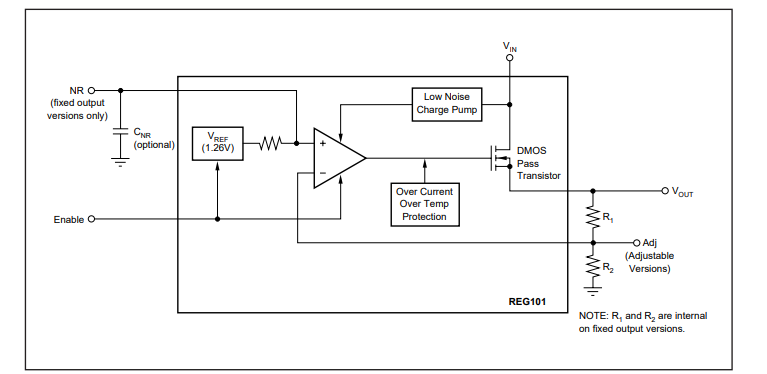
REG101 is a low noise, low difference linear voltage regulator family with low pin current. Its new DMOS topology features significant improvements over the previous design, including low voltage (only 60mV at full load) and better transient performance. In addition, no output capacitance is required for stability, unlike traditional low voltage drop regulators, which are difficult to compensate for and require expensive low ESR capacitors greater than 1μF.
Typical ground pin current is only 500 μA (at IOUT = 100mA) and drops to 10nA when not in enable mode. Unlike regulators with PNP-pass devices, the static current remains relatively constant under overload changes and power-off conditions. The REG101 output noise is very low (typically 23 μVrms at VOUT = 3.3V, CNR = 0.01μF), making it ideal for portable communication devices.
Maintain accuracy under temperature, line and load changes. Key parameters are tested in the specified temperature range (-40°C to +85°C). REG101 is well protected, with internal circuitry providing current limitation and protecting loads from damage. The thermal protection circuit prevents the chip from being damaged by excessive temperature. REG101 is available in SOT23-5 and SO-8 packs.
Pin configuration

Block Diagram

Applications
● Portable communication equipment
● Battery powered devices
● Personal Digital Assistant
● Modem
● Bar code scanner
● Backup power supply
Electrostatic sensitivity
This integrated circuit can be damaged by ESD. Texas Instruments recommends handling all integrated circuits with appropriate precautions. Failure to follow proper operation and installation procedures may cause damage. Electrostatic damage can range from minor performance degradation to complete equipment failure. Precision integrated circuits may be more susceptible to damage because very small parameter changes can cause the device to fail to meet its published specifications.